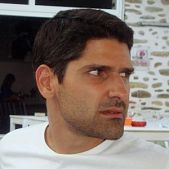
Greek researcher in the team that found the dreaming ‘hot zone’
The stuff of dreams has bewildered science for years, but a new study has found a so-called “hot zone” near the back of the brain that is always active during dreaming. In the team participated a Greek researcher.
Dreaming is usually but not exclusively associated with the rapid eye movement (REM) phase of sleep. Neuroscientists identified a region that is active specifically during dreams, in both REM sleep and non-REM sleep. This helps explain why people can sometimes report dreams when woken from NREM sleep. The study also confirmed that dreaming does not just happen in the rapid eye movement (REM) phase, associated with fast rhythms of brain activity, but can also take place in non-rapid eye movement (NREM) sleep, when brain activity is slower.
Monitoring of this hot zone led to predictions about when a person was dreaming in non-REM sleep and even some aspects of the dream contents, according to a team of researchers writing in the journal Nature Neuroscience.
They said studying this zone in people who were unresponsive, in vegetative states such as coma, could help reveal hidden traces of conscious activity.
Co-author Lampros Perogamvros, from the University of Wisconsin-Madison, said views on the significance of dreaming were varied.
“Some [researchers] support that dreams have no function, while others claim that dreaming is a world-simulation, which supports functions related to learning, performance enhancement or emotion regulation,” he said.
For the study, researchers from Switzerland, Italy and the US took EEG readings from 32 people who were woken up and asked to report on the absence or presence of dreams, and the content of those dreams.
The team also tracked brain activity in a separate group of seven who were trained in recording the content of their dreams. Dr Perogamvros said the dreams of these seven participants were used to study the neural correlates of specific dream contents, such as seeing a face or movement perception.
He said by monitoring the hot zone, the team could predict “with high accuracy if someone was dreaming or not”.
In the group of seven, they also found that when a dream contained specific elements such as faces, speech or movement, brain regions were activated which also process these sorts of stimuli in the awake brain.
Dr Perogamvros said the finding that dreaming could occur in NREM and REM sleep challenged the current understanding of the neural correlates of dreaming.
In both REM and NREM sleep, the new results suggest that dreaming specifically requires the activity of this rear-brain hot zone, irrespective of activity in the rest of the cortex.
This suggested, he said, that consciousness was not supported by a broad network in the frontal and parietal lobes as previously believed, but rather by a restricted posterior region.
“Monitoring or stimulating this [posterior] region in patients with disorders of consciousness [such as a coma] could uncover the possible occurrence of consciousness even if these patients are unresponsive,” Dr Perogamvros said.









